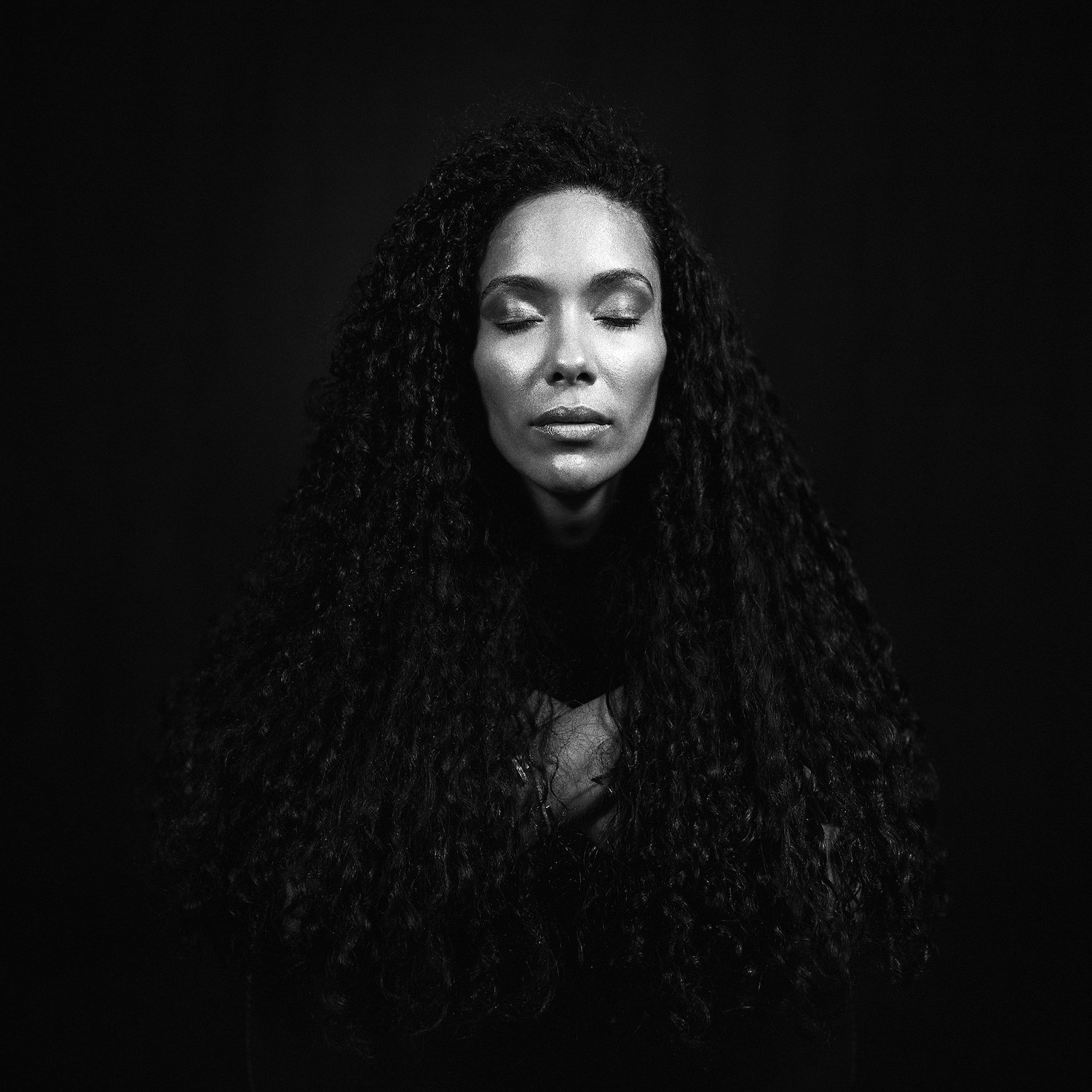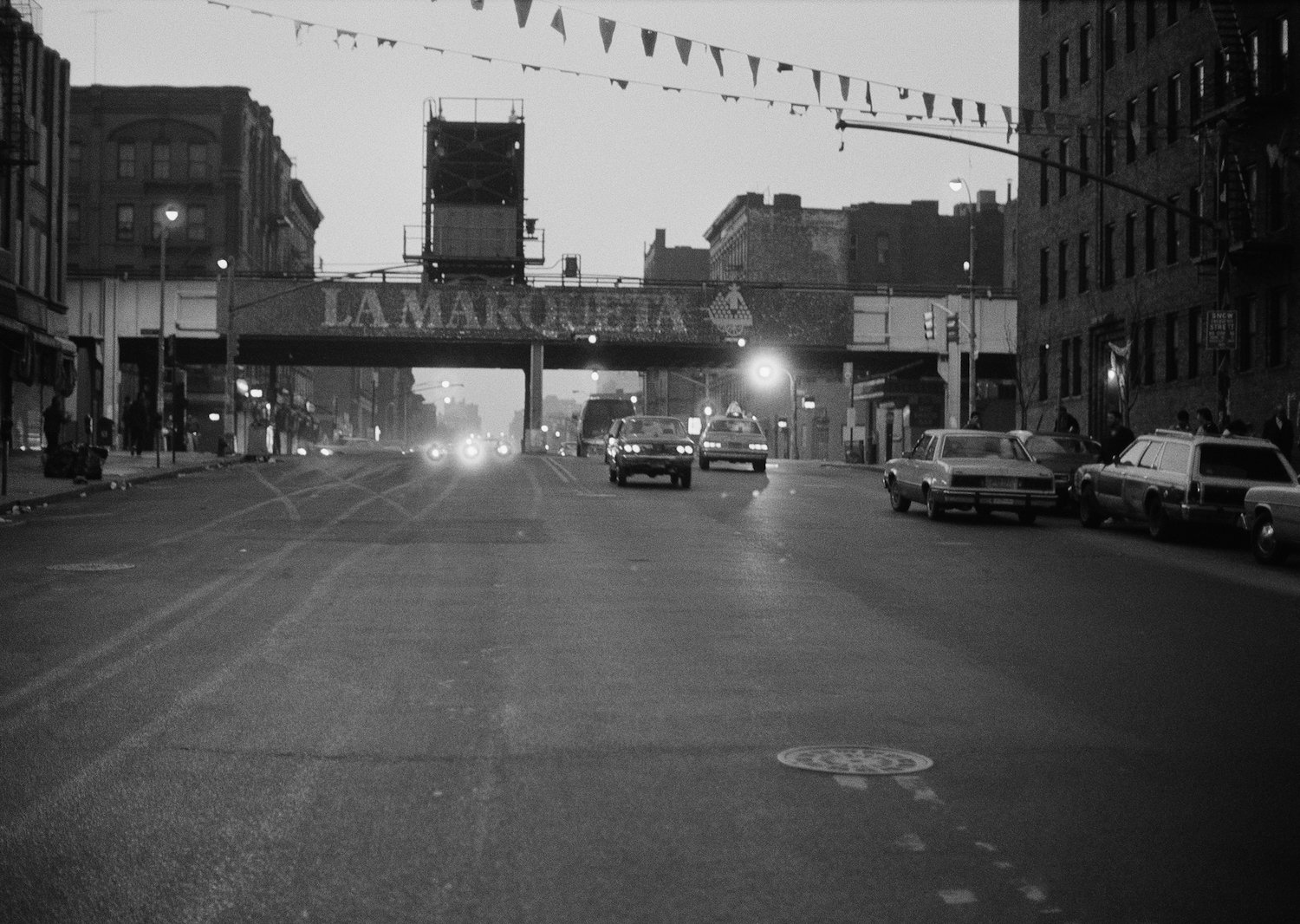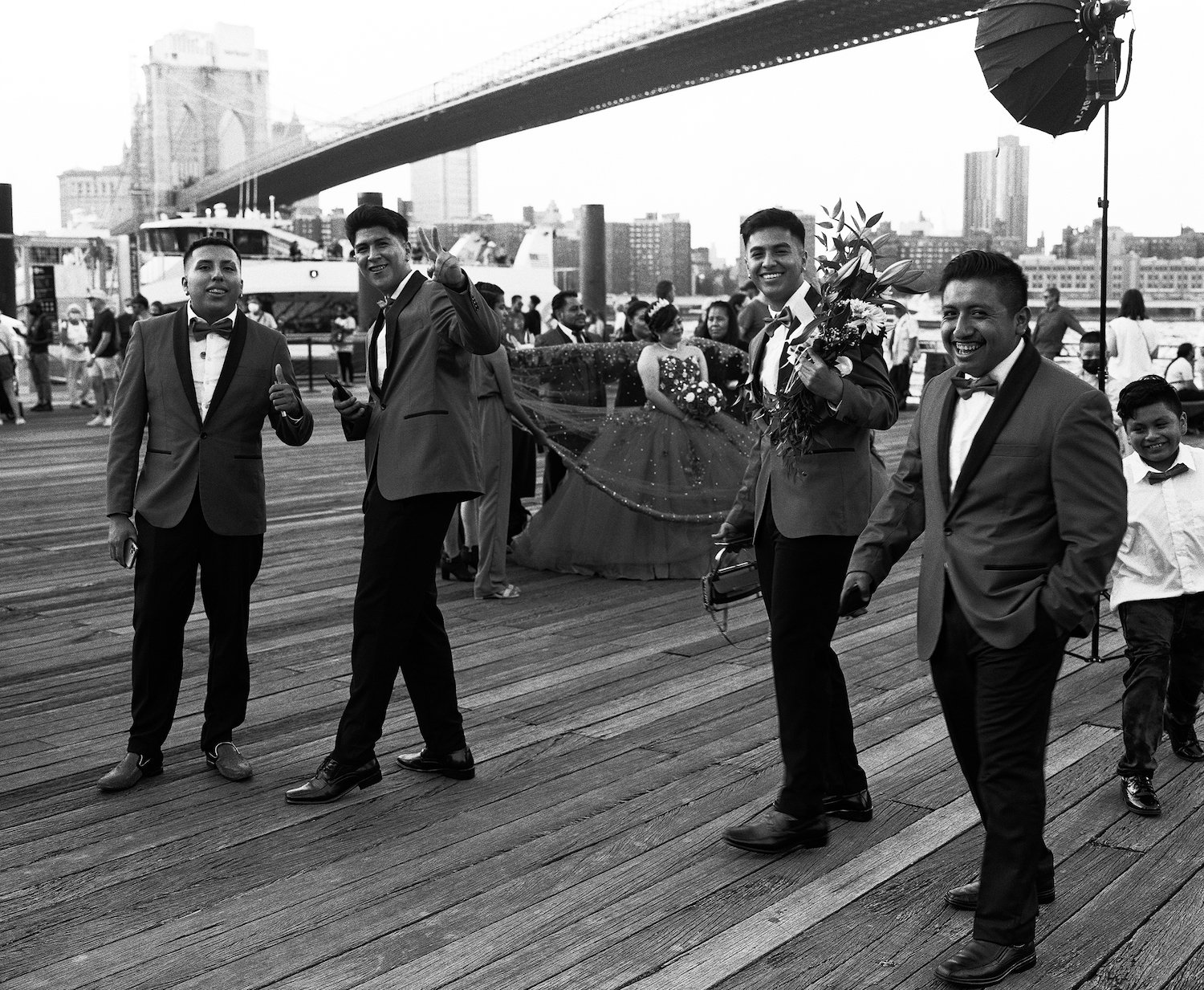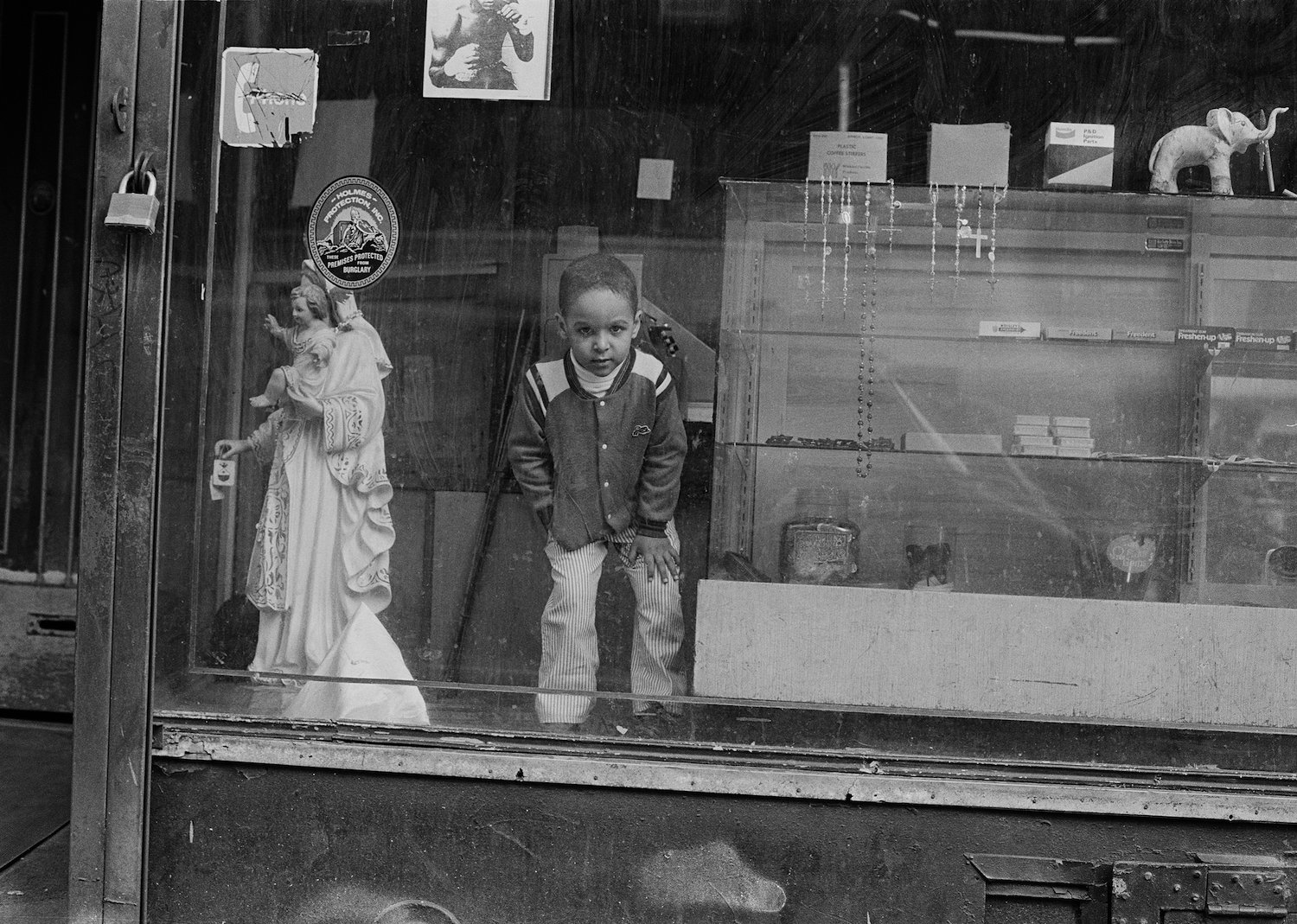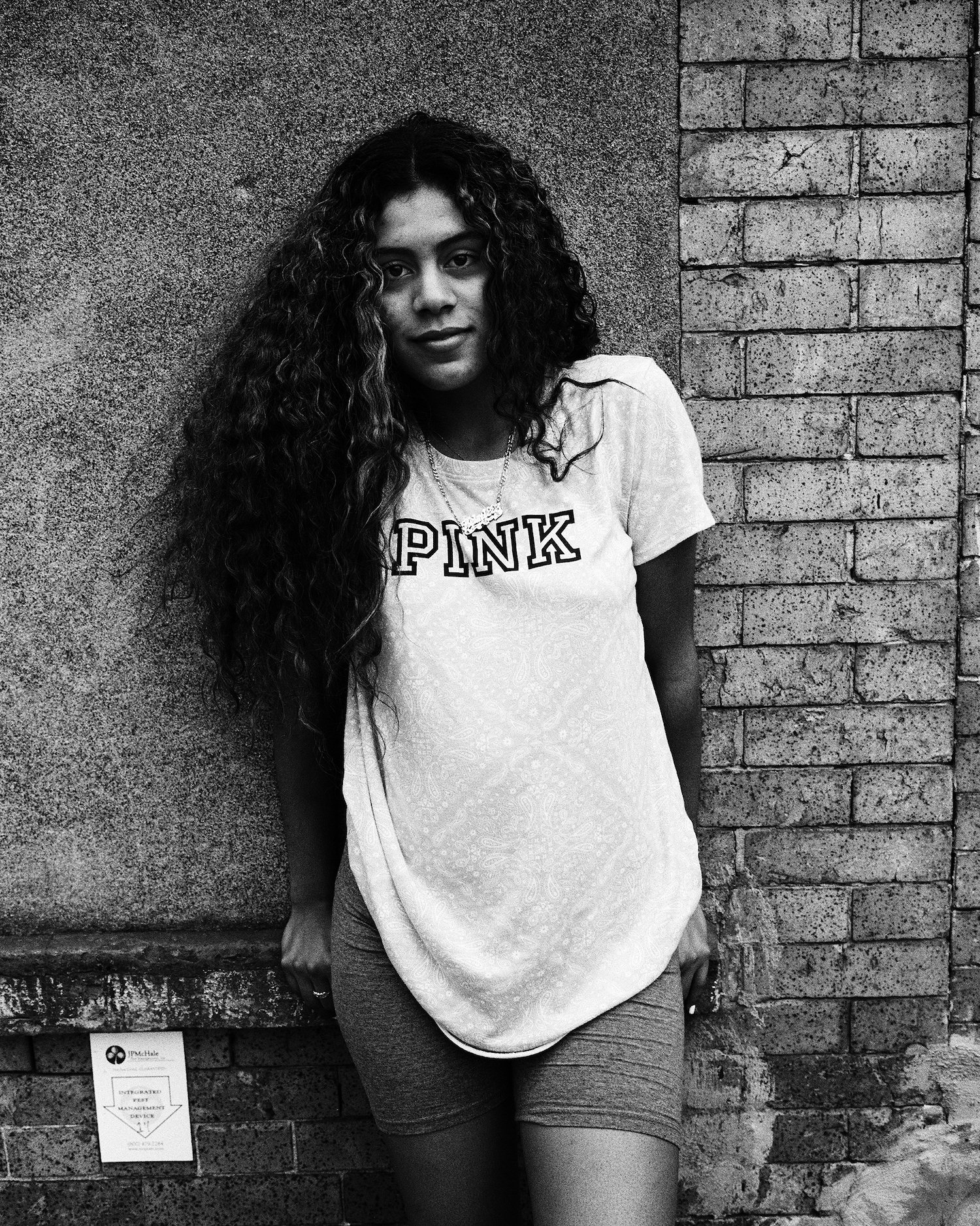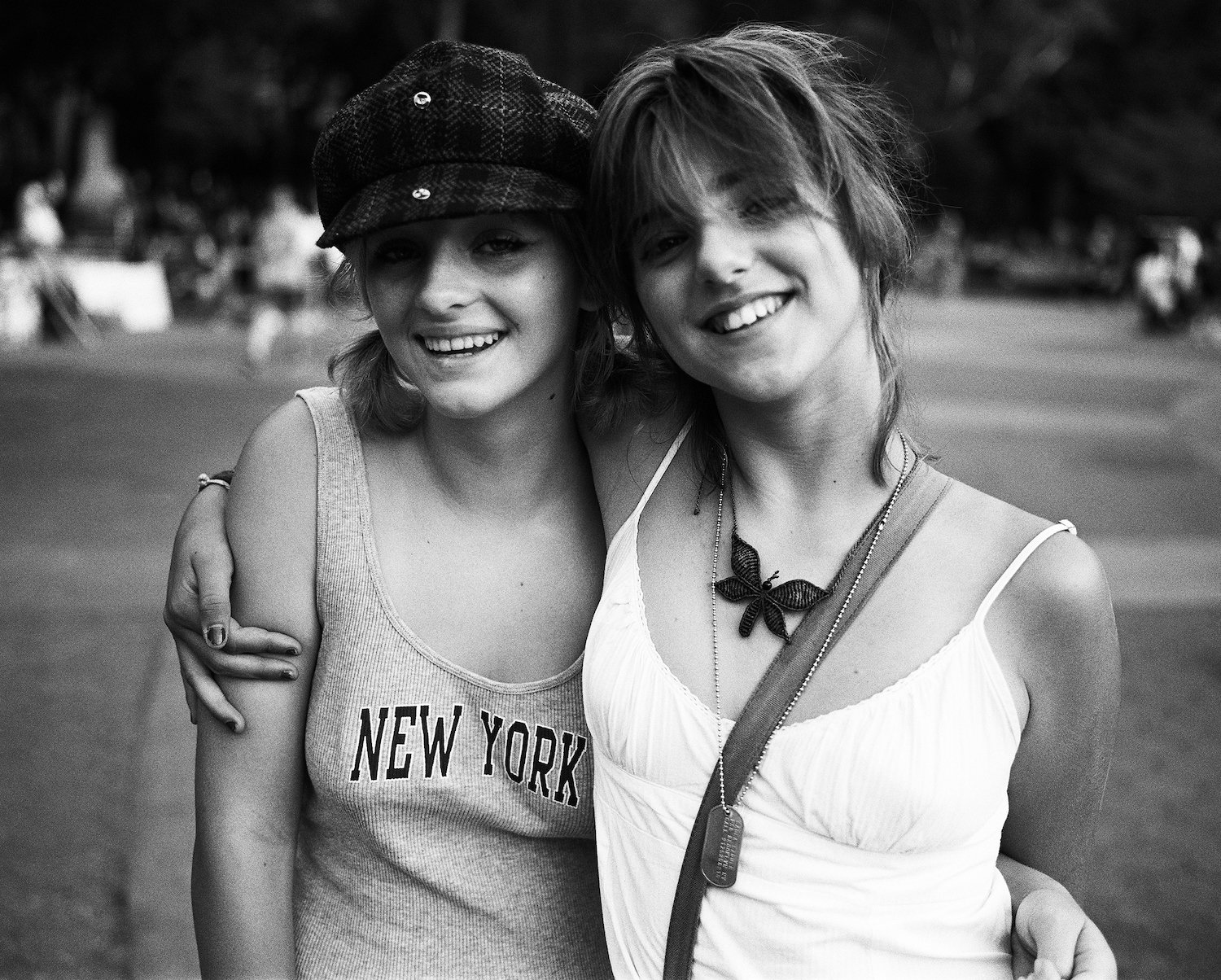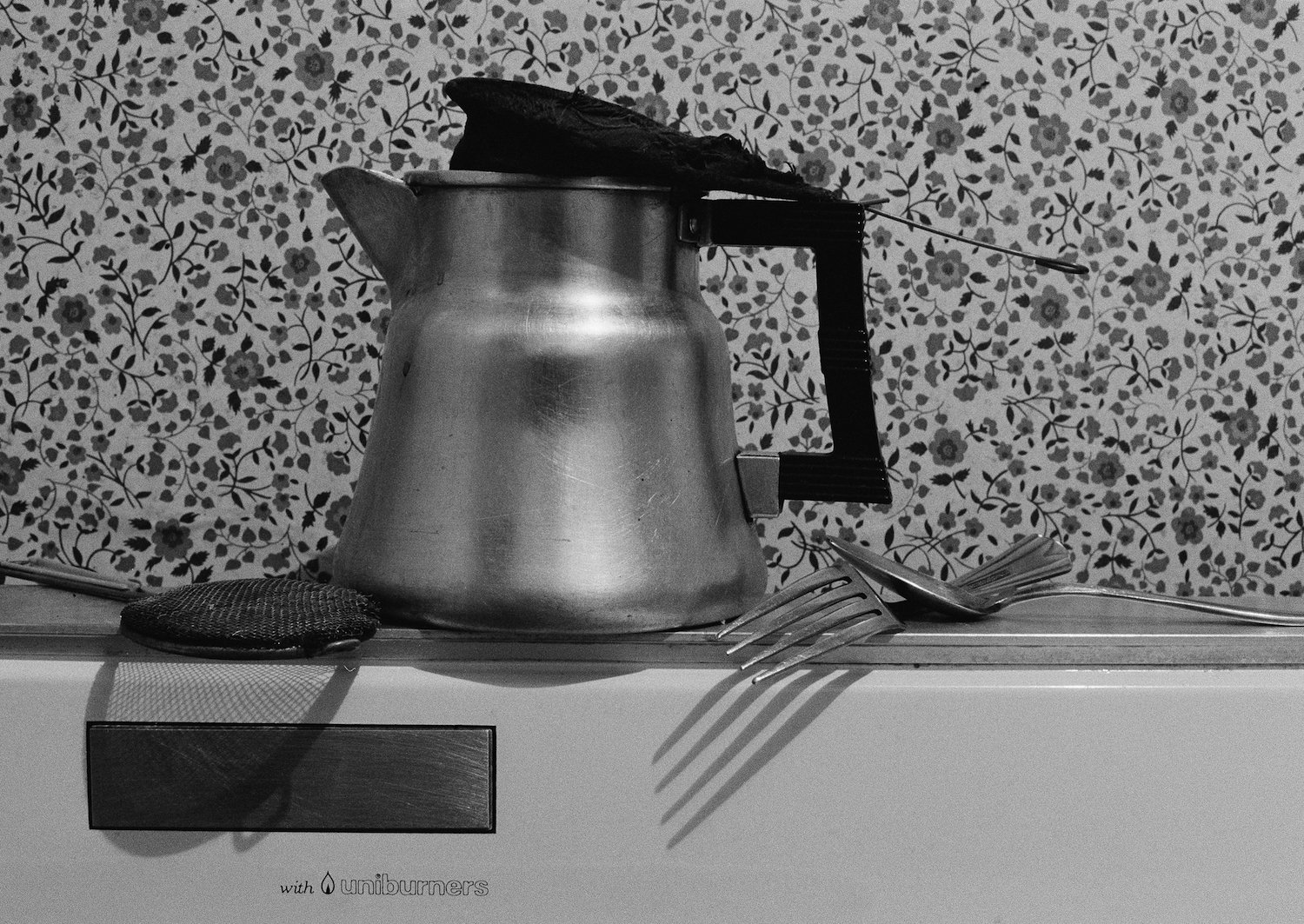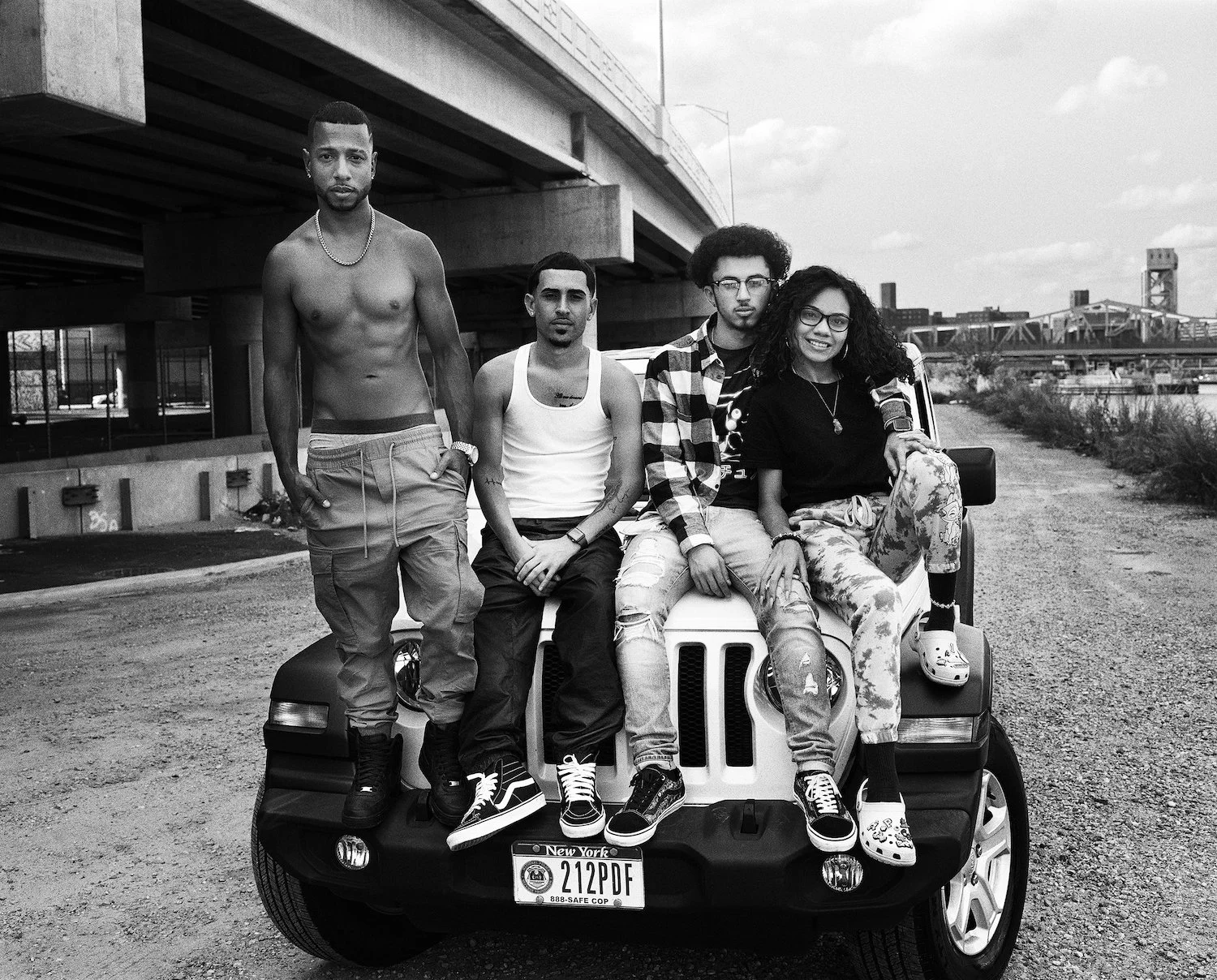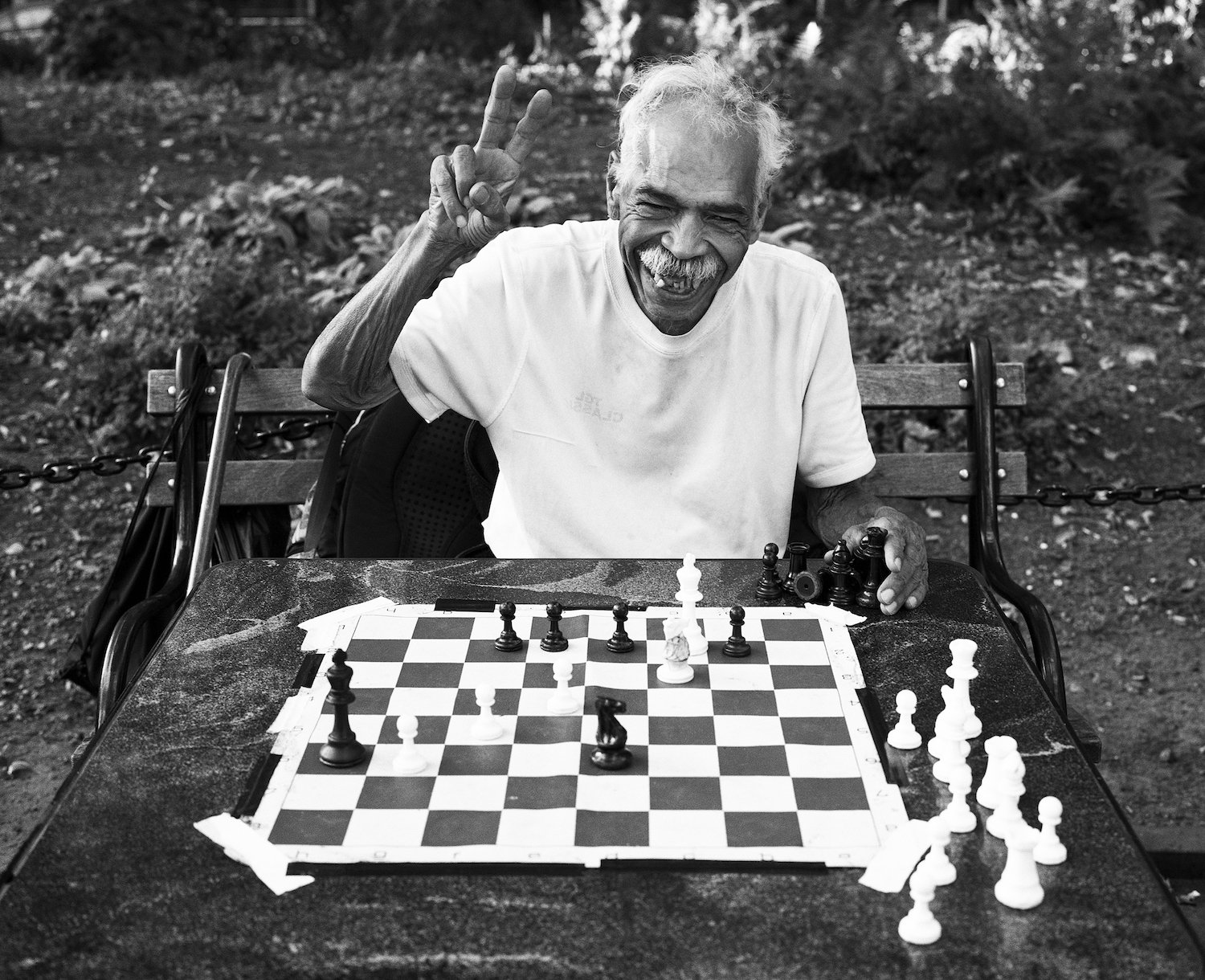Alfred González
Nicolás Dumit Estévez Raful Espejo Ovalles: Alfred, we met at El Museo de Barrio during Office Hours, the year-long experience I kindled with this organization. You just told me that your work is now in the collection of El Museo. Can you talk about this?
Alfred González: Yes, Nicolás. I had wanted my work to be a part of the collection of El Museo Del Barrio for years. Primarily because I am A Puerto Rican who was born in El Barrio and most of my early photographs are of El Barrio. I had approached Jorge Daniel Veneciano, the former director of El Museo, in 2016. After numerous attempts at getting an audience with him he granted me 15 minutes to view my portfolio. That 15 minutes turned into nearly an hour, and he told me to follow up to start the process of getting my work included into the museum’s permanent collection. Well, then he quit! I had to start the process all over again with the new director – which took forever to get, and the museum was not accepting submissions in the interim. Finally in 2019 at El Museo’s Anniversary Celebration I met the museum’s current Chief Curator Rodrigo Moura. It was kind of funny how it happened. He was speaking in the auditorium at El Museo’s to kick off the festivities when he said he had to leave early to another event. I looked at my wife sitting next to me and told her that as soon as he was done speaking, I would rush out into the lobby to cut him off and introduce myself to him and tell him about my current exhibition. Well, I did and managed to squeeze in enough words to get his attention. He told me to follow up with Susanna Temkin, curator at El Museo. He went on to say that if he did not get to my exhibit within two weeks to hound him until I got him there. Which I did and he finally came. We spoke for about ½ hour about my work and me and I told him that I was excited about becoming a part of the museum’s collection – especially because I am Puerto Rican, and El Museo was created by Puerto Ricans for Puerto Ricans… On September 22, 2021, I delivered two photographs selected by El Museo, and was finally a part of their permanent collection. I could not have been happier and prouder. The two images are La Marqueta, 1984, and Goetz on Tape, 1986.
NDEREO: Thank you for inviting me to visit Beautiful People of New York, your exhibition at the South African Consulate in Manhattan? How did this all come to be?
AG: The stars will always align when you have direction and a purpose. One day out of the blue the Consul General of the South African Consulate walked into my gallery, Gallery 71. I greeted him and he looked around at the works of art I have on the walls. He spoke to me about the consulate’s newly established cultural center, the first of its kind in all of the South African Consulates around the world. He proceeded to ask me if I thought that any of my artists would be willing to exhibit their work at the consulate as part of their ongoing project to promote artists while promoting all of the treasure of South Africa. I quickly responded, “yes, me!” I explained to him that his timing was extraordinary as I had started my selection process of well over 300 portraits I have taken of people all over New York City during my bike rides to and from my home in New Jersey to my gallery on the Upper East Side. He looked at my photographs and thought they would be perfect for their next exhibition. This was last November and my exhibition, opened on May 26.
NDEREO: Tell me about those you engaged in Beautiful People of New York. Who are they and how did you meet?
AG: I will generally stop my bike when I see someone interesting to photograph or a particular place that they are standing. Sometimes it’s all about a space and the light and shadow – then I’ll wait for the right person to walk by and ask them if they would not mind completing the picture by posing for me. I have waited for up to an hour – and it’s worth it. Some of these interactions have turned into long conversations and others were very brief as most of these people are on their way to work, school, appointments, etc.
NDEREO: What have you been learning from those who you are meeting and photographing?
AG: I have learned that people are all unique in their own way and that their beauty can further be appreciated by speaking with them and listening more than talking. Everyone has a story to share, an experience, and sometimes just need someone they feel comfortable with to share it. I’ve learned that Bobby in Bobby and the Apollo had just broken up with his girlfriend and had been miserable for the past two or three days without her. He told me it was his fault. MY advice, “buy the most beautiful flowers you can find, get on your knees and ask for forgiveness and tell her you cannot live without her. If she says ‘no’ keep trying until she says yes.” I have learned that Gregory, in Gregory, Simpson Avenue Station, is a photographer but cannot afford a camera because of his circumstances – something I will change for him as I have his information. I have learned that George, in George and His Grandmother’s Car, is now the custodian of a beautiful 1948 Chevy purchased brand new by his grandmother when he was a kid. And now he is the proud owner. It has been quite a journey for me and I am glad that I can share the moments spent with each individual who views my work.
NDEREO: Has anything shifted in you or for you as result of working with Beautiful People of New York?
AG: Yes. More compassion for people everywhere, especially the homeless. I have taken quite a number of pictures of homeless people on the streets of New York. Every time I speak about it or might post a picture, I always say to my fellow photographers to be sure and give the homeless people they photograph money, food or whatever they can for what they are receiving by taking their picture. It’s only fair. One time as I reached into my pocket, I did not have any money; I always try to carry with me plenty of singles. I reached into my camera bag and pulled out the sandwich that my lovely wife had made me for lunch and told this person that they were getting something special because the sandwich was made by my wife who prepared it with a lot of love. And so, my focus will be on creating an exhibit to call more attention to the problem we have, not the homeless problem, but the problem of not having enough resources for them. I have mentioned this at my two receptions for my exhibition and was approached by a few people who would like to help when the time comes.
NDEREO: Your daughter Natalia wrote poetry to accompany most of the photographs at the South African Consulate. Would the two of you be willing to include one of her short pieces here?
AG: Absolutely. Natalia and I were talking about my photographs last December as I was making my selections for the exhibition. I decided I wanted 50 pieces in the show. I don’t know why I chose that number and oddly enough, in the end, 50 filled the two rooms in the consulate perfectly. Just as Natalia and I were talking I had asked her if she would be willing to write a poem for each picture in the exhibition – based almost entirely on her observation of the people in them. I was thrilled when she accepted, and this is the first time any of her poetry has been shared with anyone outside of her immediate circle. The goal was to write a poem of every piece in the exhibit – but I quickly learned that you can’t just turn on a switch and write whenever you want to. Or write creatively – better stated. It is a work in progress as my goal is to publish a book of the photographs in this show with Natalia’s poems for every picture. I love collaborating with my daughter. It has really meant a lot to me and to her as well. Here’s a poem by Natalia González that brought a woman to tears as she read it and viewed the photograph entitled, Hunts Point Portrait.
Hunts Point Portrait
Concrete windows, a sore sight.
The slabbed sills sealed with four seams.
Each glance elicits a grateful blink.
For the wind in your face
when you cursed the pruning gust.
The spattering rain tapping against
your panes through sleepless nights.
The sun's fickle bright light,
the moon's insufferable glow.
The deafening sirens,
an impatiently elongated horn’s blow.
Shuttering a window, closing a wall.
A concrete window would be
the most unfortunate view.
NDEREO: Thank you for this. Hunts Point, in the Bronx, is dear to me. And you know that the South Bronx informs so much of my world. With the pandemic, I hardly leave this place, and as result of this I have really come to experience what it takes to live here full time? The Bronx is so freaking marginalized, racialized and otherized, not only abroad, but by the very city it belongs to. Sanitation gets here when it gets here, and snow removal happens here when it happens. There are very few garbage cans on street corners, and a we are under a food apartheid–despite the Bronx having what might be the biggest produce market in the world. You too have connections to the Bronx. Can you say something about this?
AG: I was born in Spanish Harlem and raised in the Johnson Projects on 112th St. & Lexington Avenue. Throughout my childhood my Beautiful Mother would take my brothers and me every weekend to her sister’s apartment in the McKinley projects on 161st & Trinity Avenue, in the Bronx. I have nothing but fond memories of those days – getting off at the Prospect Avenue Station on the 5 line and rushing to the candy store between the station and my aunt’s home. Playing stoop ball, stick ball, punch ball, kick ball and on and on and on. There was never a shortage of game for us in the playground. Everything was much cleaner then, the trains, the streets the buildings etc. As I grew older, the weekly visits turned more to holiday visits and birthdays. There were plenty of those as my aunt had six children and there were usually three of us joining the gang. When I got married, I moved to Parkchester and two years later to Coop City for 14 years or so. So, I was a Bronx resident for 16 years of my life. You are right about the negligence in this city concerning the Bronx. I would always say to my wife when a street had tons of potholes that this would never happen in Manhattan. During my photo project I decided that one week I would take a drive from the beginning of where the train came out of the ground to the end on each of the IRT lines. This was aimed at getting onto the train platform, (paying my fare of course), and walking to each end to take pictures of the surrounding buildings and neighborhoods. One thing that was glaringly noticeable was the amount of garbage on the streets disproportionate to each of the train lines. The 5/2 line being the dirtiest, followed by the 4 line and the 6 line being the cleanest. It was a surprise to me. Overflowing garbage cans on the streets and certainly not enough garbage cans for those who feel the need to keep their neighborhoods clean. This was not what I was out there for but it was pretty obvious.
NDEREO: Several years ago, you invited me to your brothers Ibrahim’s memorial in the Bronx. Who was your brother? Can you put your camera aside for now create a written portrait of him?
AG: I will try to keep it together as I answer this question. My brother Ibrahim has been the greatest influence on my twin brother Ricky and me our entire lives. Wherever he went he carried us in tow. I have so many great memories with him – too many to tell right now. I always say I had the coolest childhood. I distinctly remember when we were 8 years old Ibrahim taking us to the Army and Navy Store and buying us combat boots, a red beret, and our Puerto Rican Flag to pin on the front of it. Much like the picture of Ché Guevara: the times spent in the village wearing our leather headbands and carrying flutes that we were learning to play. We wore farmer pants back then (overalls) – the key to wearing them was no underwear underneath – and of course our leather sandals. We went to see a lot of movies we probably shouldn’t have at such a young age (prob 12 by now) Fritz the Cat, A Clockwork Orange – and we did see great classics and awe-inspiring movies – Lawrence of Arabia, 2001 A Space Odyssey, Dr. Strange Love, and this list goes on and on. At 17 Ibrahim decided he wanted to learn to play the piano so he went out and somehow bought a baby grand from a convent from the nuns living there. I can remember the struggle of helping him move the piano with about five other people to get it into our Mom’s apartment. It filled half the living room, and filled the entire house with beautiful sound waves as Ibrahim learned to play – and as always, he taught my brother and me to play as well – not just the piano but percussion instruments as well, with a focus on the congas. When Ibrahim moved out a year later, we’ll never forget carrying that piano five flights through a narrow staircase with tight turns. It was not fun but we got it done. Ibrahim was sure to get us a piano so we would not be without one – it was an upright and took up a lot less space in mom’s Living room. It was in Ibrahim’s makeshift darkroom in his bathroom of his new apartment that I saw, for the first time, an image come to life in the developing tray. Wow – “it was magic!” – I will continue to say for the rest of my life.
We visited so many different religious temples – Hare Krishna, Buddhist and so many others. It was the Mosques that finally answered all of the questions Ibrahim needed answered in his quest – Islam. He was a devout Muslim from the day he converted to Islam when he was 17 years old to when he moved to his new home in the spirit world in 2013. My brother is everything to me and by far the worst day of my life was that phone call from his wife Janet on the morning of June 4, that he was not breathing. At only 57 years old, his mission on this planet had ended and with him went half of my heart. If I have to describe my brother in a few short works: he was kind to everyone and always giving of his most precious commodities: time and knowledge. I recount this every time I talk about Ibrahim. I remember reading on the last page of his 8th grade graduation autograph book a simple message written by our Mother, Carmen, “Do all the good you can to all the people you can.” Ibrahim listened and lived by my Mother’s words. – tear.
NDEREO: Thanks to people like you, Arthur Avilés, Rhina Valentin, Quintín Rivera Toro, and on and on, I have been learning about the Puerto Rican experience in the City. Just recently, Arthur Avilés told me how he identifies as New York-Rican, which is a new term for me. The Bronx and New York City in general are so imbued with Puerto Rican Culture. Many of my mentors have been Puerto Ricans, Nuyoricans, and New York-Ricans, and your organizations have been here for me big time. This includes El Museo del Barrio. Thank you! Who are you in this conversation about Puerto Rico?
AG: When I was about 13 my best friend moved to Puerto Rico with his parents and returned about two years later. He told me that the Puerto Ricans on the Island did not consider us “real” Puerto Ricans because we were born in the states. I never did understand that as I felt that my heart will always be with the mainland, Puerto Rico. This is what I was taught by my Mother and Grandmother my whole life. The music the dance and the food. I will always say proudly that I am a Nuyorican thanks to my Mother keeping our beautiful culture alive in our family through her incredible food – pasteles, arroz con gandules – oh I can go on and on. I do like the distinction as I also love New York for all she has given me. For many summers we would go with Mom to Las Fiestas Patronales on Randall’s Island and to a number of cultural events in the city. My first time to Puerto Rico was for my honeymoon when I got married 37 years ago. I’ll never forget the smell of our island when I stepped off of the plane. Since that first time I have been back to Puerto Rico almost twice a year to visit my in-laws. I can’t wait to get back! It’s been two and a half years since Covid got in the way.
NDEREO: Thank you for the kindness with which you move through the city. When do you plan to come to the South Bronx to photograph the most amazing people? I can meet you on Beck Street and we can take it from there!
AG: I think this summer will definitely offer us that opportunity and I would love to spend the time with you and our beautiful people of the Bronx.
NDEREO: Anything that you would like to add?
AG: Yes. Thank you so much for coming to my exhibition – it shows you care, and you always want to learn more and more. It was an honor to host you and it was certainly no coincidence that you were the person that reviewed my portfolio during your project – Office Hours. I am grateful to collaborate with you on the many projects to come that you feel I would be of use for your mission. Un Abrazo, Alfred
Alfred Gonzalez was born in New York City, in 1962. He was raised in “El Barrio” – Spanish Harlem, on 112th Street & Lexington Avenue, where many of his early photographs are taken. He attended Manhattanville College in Purchase, NY, where he studied photography and urban design from 1980 – 1981. He transferred to Pratt Institute in Brooklyn, NY, and attended their School of Architecture for one year and then transferred to their School of Photography where he felt at home and at last back in the darkroom. To read full bio click HERE
Alfred González / Related links: Website / IG / FB / Gallery 71 / email
Images above courtesy of Alfred González
